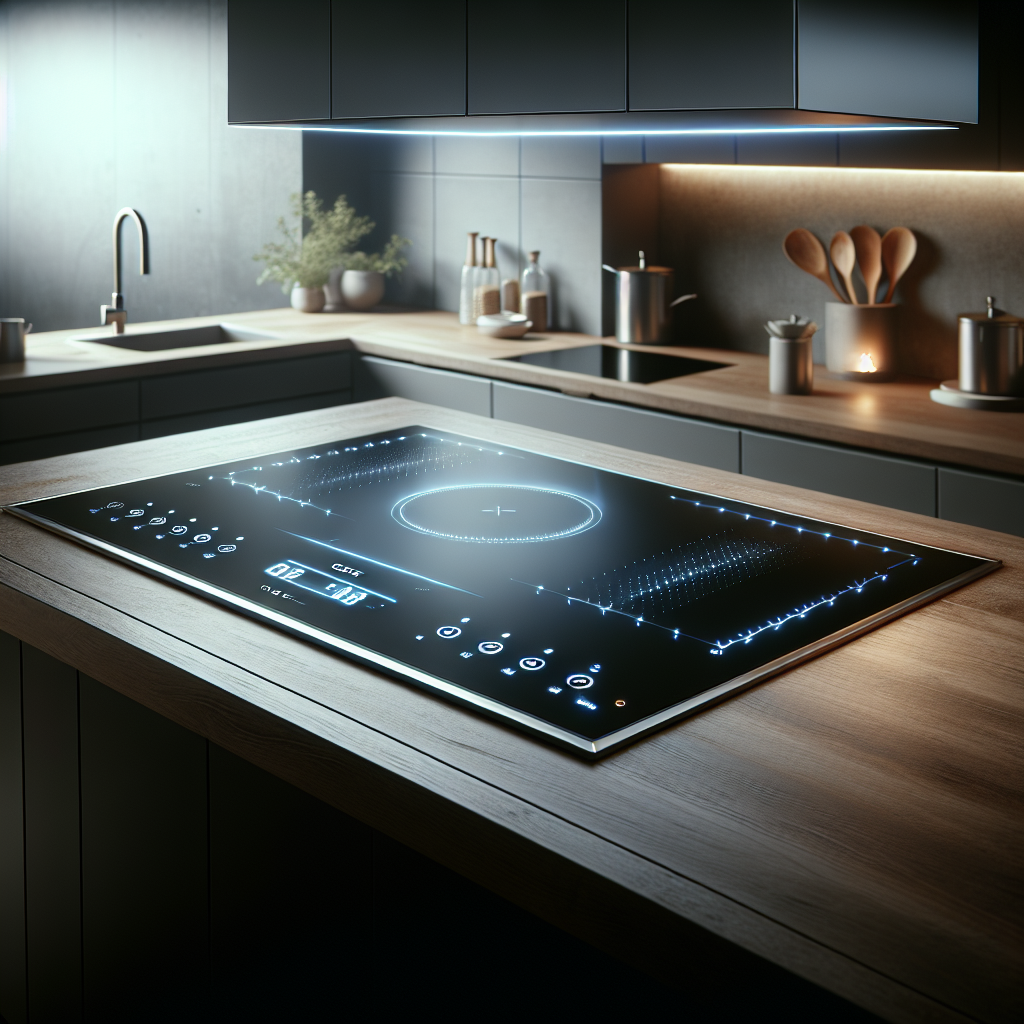Looking to upgrade your kitchen essentials? Look no further! At Tastepan.com, we understand the importance of having the right cookware to enhance your cooking experience. In our latest article, “Induction Cookware Vs. Gas Cookware: Pros And Cons,” we break down the benefits and drawbacks of both types of cookware, allowing you to make an informed decision. Whether you’re a seasoned chef or a beginner in the kitchen, we’ve got you covered with our comprehensive review and recommendation of kitchen equipment. Get ready to elevate your cooking game and choose the best for your culinary needs!

Induction Cookware
Energy Efficiency
One of the key advantages of induction cookware is its energy efficiency. Unlike gas cookware, which requires a constant supply of gas for heating, induction cookware uses electromagnetic fields to generate heat directly in the cookware itself. This means that the heat is transferred directly to the pot or pan, without any heat loss to the surrounding environment. As a result, induction cookware can heat up much faster and more efficiently than gas cookware, saving you time and energy in the long run.
Heat Distribution
Induction cookware also excels in its ability to distribute heat evenly. The electromagnetic fields used in induction cooking ensure that heat is evenly distributed across the entire surface of the cookware, eliminating any hot spots or uneven cooking. This is especially important when preparing delicate dishes that require precise and uniform heat distribution. With induction cookware, you can be confident that your food will be cooked consistently and perfectly every time.
Heat Control
Another advantage of induction cookware is its precise heat control. Unlike gas cookware, which relies on the size of the flame to adjust the heat, induction cookware allows for precise temperature adjustments. Most induction cookers come with multiple heat settings, allowing you to easily control the intensity of the heat according to your cooking needs. This level of control is especially beneficial when working with sensitive ingredients or when following specific recipes that require precise temperature regulation.
Safety
Safety is a top priority in any kitchen, and induction cookware excels in this aspect as well. Since induction cooking works by inducing heat in the cookware itself, the stovetop surface remains cool to the touch. This greatly reduces the risk of accidental burns, especially when compared to gas cookware, where open flames can pose a potential hazard. Additionally, induction cookware often comes with safety features such as automatic shut-off timers and child-lock functions, providing an additional layer of protection for you and your loved ones.
Ease of Cleaning
Cleaning up after a meal can be a time-consuming task, but induction cookware makes it a breeze. The smooth and flat cooking surface of induction cookware makes it easy to wipe down and clean. Since the heat is generated within the cookware itself, there are no crevices or burners to clean, eliminating the need for scrubbing and scraping. With induction cookware, you can spend less time on clean-up and more time enjoying your culinary creations.
Compatibility
When it comes to compatibility, induction cookware does require specific types of cookware. Due to the way induction cooking works, the cookware must be made from a magnetic material, such as cast iron or stainless steel, in order to generate the necessary heat. However, many manufacturers now offer a wide range of induction-compatible cookware options, ensuring that you can find the perfect pots and pans for your induction cooktop.
Cooking Time
Induction cookware offers a significant advantage when it comes to cooking time. The electromagnetic fields used in induction cooking produce heat instantly, allowing the cookware to heat up much faster than gas cookware. This means that you can start cooking your meals almost immediately, saving you valuable time in the kitchen. Whether you’re whipping up a quick weeknight dinner or preparing a multi-course feast, induction cookware can help you get delicious meals on the table in no time.
Cost
When considering the cost of induction cookware, it’s important to note that the initial investment may be higher compared to gas cookware. However, the long-term cost savings from energy efficiency and reduced cooking time can offset the initial expense. Additionally, the growing popularity of induction cooking has led to a wider range of induction cookware options, catering to various price points, making it more accessible to a larger audience.
Maintenance
In terms of maintenance, induction cookware is relatively low-maintenance compared to gas cookware. Since the heat is directly transferred to the cookware, there is less chance of food residue getting baked onto the stovetop surface. Regular cleaning with mild soapy water and a soft cloth is usually sufficient to keep your induction cookware in excellent condition. It’s important to note that abrasive cleaners and metal utensils should be avoided to prevent scratching the cookware surface.
Durability
Induction cookware is known for its durability and longevity. The materials used in induction-compatible cookware, such as stainless steel and cast iron, are typically known for their strength and resilience. With proper care and maintenance, induction cookware can last for many years, providing you with reliable and efficient cooking performance.

Gas Cookware
Energy Efficiency
Gas cookware relies on a constant supply of gas to generate heat, making it less energy efficient compared to induction cookware. With gas cookware, there is some heat loss due to the nature of burning gas and the heat dispersion. However, modern gas stoves have made significant improvements in energy efficiency, with features like flame control knobs that allow you to adjust the intensity of the flames as needed, reducing energy waste.
Heat Distribution
Gas cookware is known for its quick heat-up time and ability to distribute heat evenly. The flames provide direct contact with the cookware, allowing for efficient heat transfer. Gas cookware also offers the advantage of visual heat control, as you can observe the flames and adjust them accordingly to ensure even cooking. However, it’s important to note that gas cookware may still have hot spots, depending on the design and quality of the burner.
Heat Control
Gas cookware provides excellent heat control due to the ability to adjust the flame intensity. Whether you need a high heat for searing or a low simmer, gas cookware allows for precise temperature adjustments. This level of control is particularly beneficial for certain cooking techniques and recipes that require specific heat levels. Gas cookware offers flexibility and responsiveness that can enhance your cooking experience.
Safety
While gas cookware provides heat and cooking versatility, safety concerns arise from the open flames. The risk of accidental burns or fires is higher with gas cookware compared to induction cookware. However, modern gas cooktops often come equipped with safety features such as flame failure detection and automatic shut-off, minimizing the risks associated with gas cooking. It is still important to exercise caution and follow safety guidelines when using gas cookware.
Ease of Cleaning
Cleaning gas cookware can be a bit more challenging compared to induction cookware. The burners and grates of gas cookware can accumulate food residue and grease, requiring regular cleaning and maintenance. Although removable burner grates make it easier to clean, scrubbing and soaking may be necessary to remove stubborn stains and build-up. Regular cleaning and maintenance will ensure the longevity and performance of your gas cookware.
Compatibility
Gas cookware is generally compatible with a wide range of cookware materials, including stainless steel, cast iron, and non-stick coatings. This versatility allows you to use your existing cookware without any limitations. Gas cooktops also offer the advantage of being compatible with traditional cookware types such as copper and aluminum, which might not work with induction cookware. This flexibility in compatibility can be a deciding factor for those who have specific preferences in cookware materials.
Cooking Time
Gas cookware provides quick heat-up times, allowing you to start cooking immediately. The open flames generate high heat promptly, which can be advantageous for certain cooking techniques that require rapid heat transfer. Gas cookware offers precise and responsive heat adjustments, enabling you to control the cooking time according to your preferences and recipe requirements.
Cost
Gas cookware tends to be more affordable initially compared to induction cookware. The cost of a gas cooktop and gas supply infrastructure is generally lower than that of an induction cooktop. However, it’s essential to consider ongoing costs, such as gas consumption and price fluctuations, when evaluating the long-term expenses. Gas cookware can be a more cost-effective option for those who prioritize upfront affordability.
Maintenance
Maintaining gas cookware involves regular cleaning and inspection to ensure safety and optimal performance. The burners and gas supply components should be kept clean and free from debris to prevent blockages and ensure efficient gas flow. It’s also crucial to regularly check for gas leaks and address any issues promptly. Additionally, periodic professional maintenance for gas lines and burners is recommended to ensure safe and reliable operation.
Durability
Gas cookware, particularly cooktops, is generally known for its durability and longevity. Gas burners and stovetops are often made from robust materials such as stainless steel or tempered glass, designed to withstand high temperatures and everyday use. With proper care and maintenance, gas cookware can provide years of reliable cooking performance.
In conclusion, both induction cookware and gas cookware offer distinct advantages and considerations. Induction cookware excels in energy efficiency, heat distribution, precise heat control, safety, ease of cleaning, and compatibility with specific cookware materials. On the other hand, gas cookware offers quick heat-up times, excellent heat control, affordability, compatibility with various cookware types, and durability. Ultimately, the choice between induction cookware and gas cookware depends on personal preferences, cooking style, and specific kitchen requirements. Considering the pros and cons outlined above will help you make an informed decision and enhance your cooking experience.


